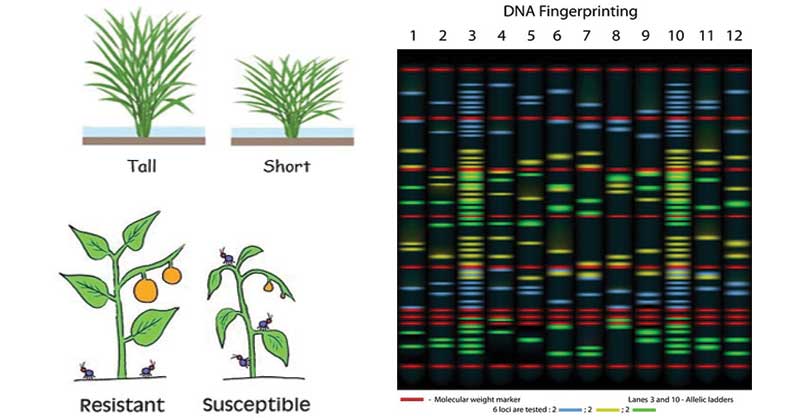Epidemiological markers are biological markers that are used to characterize microorganisms or discriminate between genomes based on the genetic variation among microbial isolates.
Uses of Epidemiological Markers
- Epidemiological markers are mostly used for strain typing.
- It is used to:
- Classify isolates of microorganisms
- Catalogue genetic variation
- Define relatedness or lack of it between microbial species or genera
- It can be applied in infection control to:
- Confirm an outbreak in an institution
- Identify an outbreak in what appears to be sporadic cases of infection
- Identify risk factors for recent infections or rapidly progressing disease
- Design intervention in the spread of disease
- Assess the efficacy of the intervention
- Define mode of spread of pathogenic organisms e.g. MRSA, VRE, and ESBL producing organisms
- Track geographical spread of pathogens of public health importance.
- It is usually performed to clarify whether two isolates from different sources represent the same strains or distinct ones in order to provide data for epidemiological purposes.
Features of Epidemiological Markers
Epidemiological markers should be:
- Generally stable to discriminate between related and unrelated strains
- Widely available
- Easy to detect
- Common among strains

Image Source: https://i.ytimg.com/vi/Quk-Dh65iHY/maxresdefault.jpg and https://www.ck12.org/book/CBSE_Biology_Book_Class_XII/section/8.5/
Phenotypic and Genetic Markers
A. Phenotypic markers and Phenotypic methods
- The phenotype of an organism is the composite of the organism’s observable characteristics or traits, including its morphology or physical form and structure; its developmental processes; its biochemical and physiological properties; its behavior, and the products of behavior.
- The markers that are used to characterize such features of an organism are termed as phenotypic markers.
- Biotyping
- Antimicrobial susceptibility testing (antibiogram)
- Serotyping
- Bacteriophage typing
- Multilocus enzyme electrophoresis
- Polyacrylamide gel electrophoresis of cellular proteins
- Immunoblot fingerprinting
Disadvantages of Phenotypic Markers
- Poor discrimination between strains
- Labor intensive, long procedures
- Produce variable results, some not available for all microorganism
B. Genetic markers and Genetic (DNA based) methods
- Genetic markers are variants in the DNA sequence that can be typed directly.
- It is a gene or DNA sequence with a known location on a chromosome that can be used to identify individuals or species.
- Markers are transmitted from parent to offspring clearly following regular Mendelian patterns, and the chromosomal locations of genetic markers are generally known.
- The ultimate purpose of mapping studies is to identify genes associated with susceptibility to disease to enhance our understanding of disease pathogenesis and to facilitate the development of appropriate preventive strategies.
- Plasmid fingerprinting
- Restriction endonuclease analysis of chromosomal
- DNA with conventional electrophoresis
- Ribotyping
- Pulsed-field gel electrophoresis (PFGE)
- Amplification methods- PCR
- Multilocus sequence typing
- Genome sequencing– a most reliable method
Advantages
- Stable, avoid problems associated with gene expression
- Widely applicable to a range of microorganisms
Disadvantage
- Expensive startup cost
- Labor intensive
References
- https://www.scribd.com/presentation/6694207/Lecture-9-Bacterial-Epidemiological-Markers
- https://www.ncbi.nlm.nih.gov/pubmed/3377561
- https://link.springer.com/article/10.1007/s10681-005-0626-3
- http://cgil.uoguelph.ca/QTL/PhenotypicMarkers.htm
- https://www.sigmaaldrich.com/life-science/molecular-biology/cloning-and-expression/learning-center/definitions.html
- https://pdfs.semanticscholar.org/9831/2ed7502919fc4ec64b8bd1c4e3a662fa391b.pdf
- https://www.ncbi.nlm.nih.gov/pubmed/8923138
- http://www.biotech.iastate.edu/publications/mendel/ModuleIIP1.pdf
- Park, K. (n.d.). Park’s textbook of preventive and social medicine.
- Gordis, L. (2014). Epidemiology (Fifth edition.). Philadelphia, PA: Elsevier Saunders.
